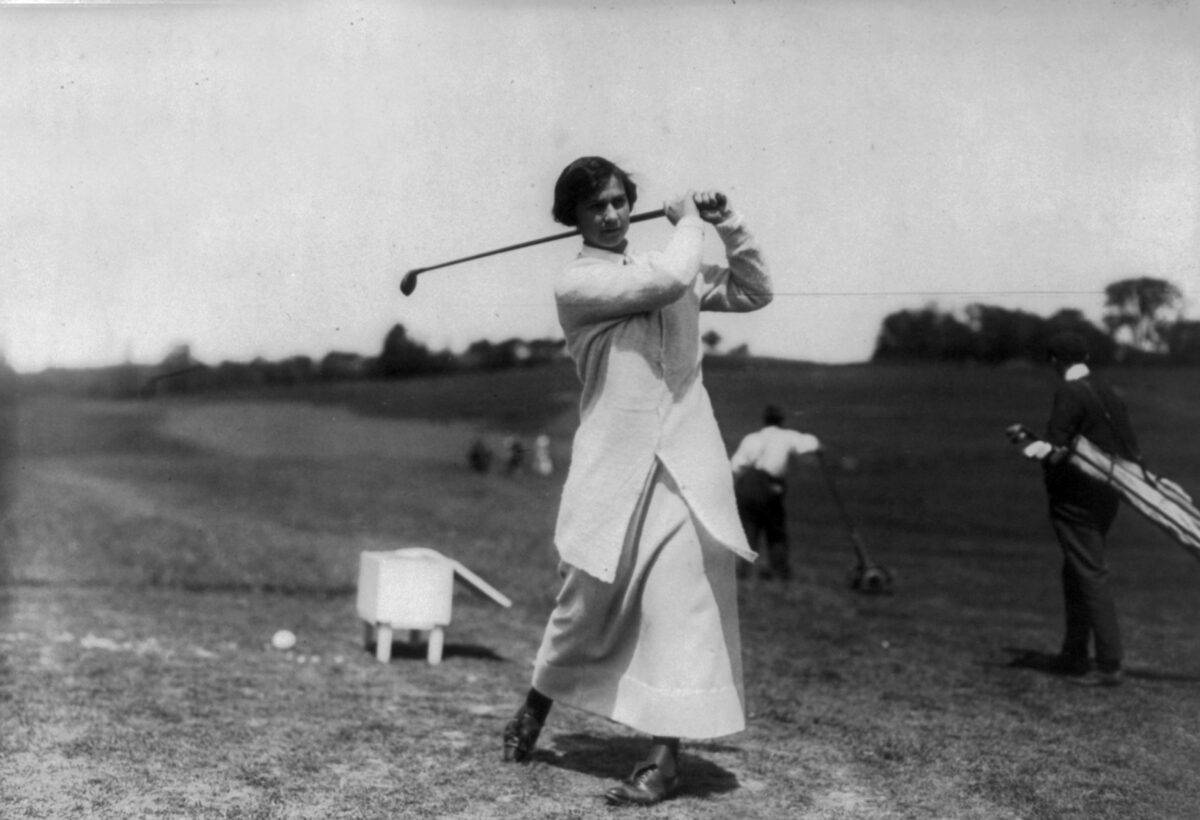Water is an integral part of everyday life. It’s also vital to golf.
That’s why the United States Golf Association says it’s investing $30 million in its effort to drive forward a more sustainable game. Last month, the USGA announced a multi-year, multi-million-dollar investment toward reducing golf’s use of water.
Efforts to reduce water usage are nothing new in the game, but it’s more vital now than ever.
“There’s only going to be more competition for our water resources as population increases,” said Cole Thompson, the USGA’s Director of Turfgrass and Environmental Research. “That’s really what this initiative is, is the USGA committing to hopefully leading the industry toward water resiliency.”
The USGA’s $30 million commitment over the next 15 years will advance underutilized strategies and technologies that golf courses can use to economically reduce their use of water, a vital and increasingly regulated natural resource with near- and long-term cost and availability concerns. The work will focus on irrigation optimization, advanced conservation innovation and water sourcing and storage.
“The long-term economic and environmental sustainability of green-grass golf courses – where more than 25 million people enjoy the game and millions more are employed – will be challenged in certain regions if the game doesn’t advance this critical work now,” Mike Whan, CEO of the USGA, said in a release. “We are enthused and impressed by the reductions golf course superintendents have pursued over the past decade, and even more optimistic about the future. The USGA is ready to not only contribute our voice, but also our resources and expertise, to help our golf course partners and ensure golf’s future.”
Some highlights of the commitment include:
- Launching and continuously update a water resilience playbook for the game of golf
- Demonstrate underutilized and emerging, research-based practices
- Understand and break down barriers to adoption of proven strategies (including financial barriers)
- Continue to support water resilience research and turfgrass breeding programs
The work toward greater water resilience propels many of the current and emerging practices employed throughout golf, which have contributed to a 29 percent reduction in golf’s use of water from 2005-20. The USGA’s initiative will build on that benchmark, with the goal of more widespread adoption nationwide.
“The problem of water is not going away,” Thompson said. “You’ve got to think about what your water sources are and if they’re being used efficiently, so you know if you can diversify your water supply.”
One of the best examples of water conservation is at Pasatiempo Golf Club in California, which in September of 2017 started using a $9 million irrigation setup, consisting of a 500,000-gallon subterranean water storage tank, a water treatment facility and a pump station.
The wastewater treatment site supplied between 60 percent and 70 percent of Pasatiempo’s irrigation needs annually, superintendent Justin Mandon said. In addition, Mandon said Pasatiempo also used potable water and well water, though its use of potable water has dropped nearly 80 percent since opening the wastewater treatment site.
“I’m not aware of other courses anywhere that use three different sources of water,” Mandon said.
Mandon has worked with the USGA and has spoke at water summits to discuss Pasatiempo’s changes and how other courses can do their part.
“Even if you think you’re in an area where you have very secure water, you really need to start thinking about where does your water actually come from, who controls that,” Mandon said. “Start really started having those conversations about where this commodity is going to start to go because it’s going to become more and more limited, regardless of where you are in the United States.”
The USGA is partnering with courses on numerous field projects designed to show where and when the water conservation potential of a strategy outweighs the investment and disruption required for implementation. Research supports that drought-tolerant grasses use about 20 percent less water than commonly used varieties, depending on location and grassing scheme, and installing them typically pays off in five to 10 years.
With a goal of identifying early adopters, the USGA will continue to collaborate in a series of water summits in several states along with its Allied Golf Associations, as it seeks to draw the best talent and innovations toward the program’s goals.
The organization will also work together with golf courses on sharing best practices and innovations that could be more widely adopted to advance program goals.
“If you employ the right strategies in your region, this can help get to a reasonable amount of water to provide a golf course,” Thompson said.
Whan believes the USGA (and other governing bodies) have long had good intentions when it comes to water conservation, but simply tried to hand research down to golf courses already facing financial battles.
With the new initiatives, the CEO believes the pathway to success becomes more practical.
“What I said to the board when I got there is we’ve been really good at research right up until the white paper. We go spend a bunch of money on research, we write an incredible white paper, we send that out and we think ‘job well done.’ We’ve got to move from white paper to actually putting product in the dirt,” Whan said. “So our 15-30-45 initiative which is 15 years, $30 million to reduce water on a golf course by 45 percent, you can’t just show somebody on a pamphlet how to do that.
“Like, if somebody can’t afford the $5 million dollar drip irrigation change, we’re going to have to put up the five and let them pay us back a million a year over five years. We’ve got to create a process.”
For example, Golfweek learned that in the anchor agreement the USGA signed with Pebble Beach — which includes hosting four U.S. Women’s Opens — that the oldest continuous working golf course west of the Mississippi will be a testing ground of sorts. Officials will see what they can learn from Del Monte Golf Course, which sits right near downtown Monterey.
“They’re kind of letting us experiment at Del Monte and actually try different things,” Whan said. “We’ve got a similar agreement in the South, we’re taking research and we’re actually putting it in the ground so that we can show somebody, ‘hey, at this place we reduced water by 53 percent. Let us tell you how, and do you want to try to do that here at your own course?’
“I think in the past we stopped at the white-paper stage, like in a 2-by-2 plot of land at UC Riverside we showed that this strain of grass needs 30 percent less water. But that doesn’t help your typical superintendent.
“We’re going to take it to the next level.”
Golfweek’s Tim Schmitt contributed to this report.
[mm-video type=playlist id=01es6rjnsp3c84zkm6 player_id=01evcfxp4q8949fs1e image=]

















